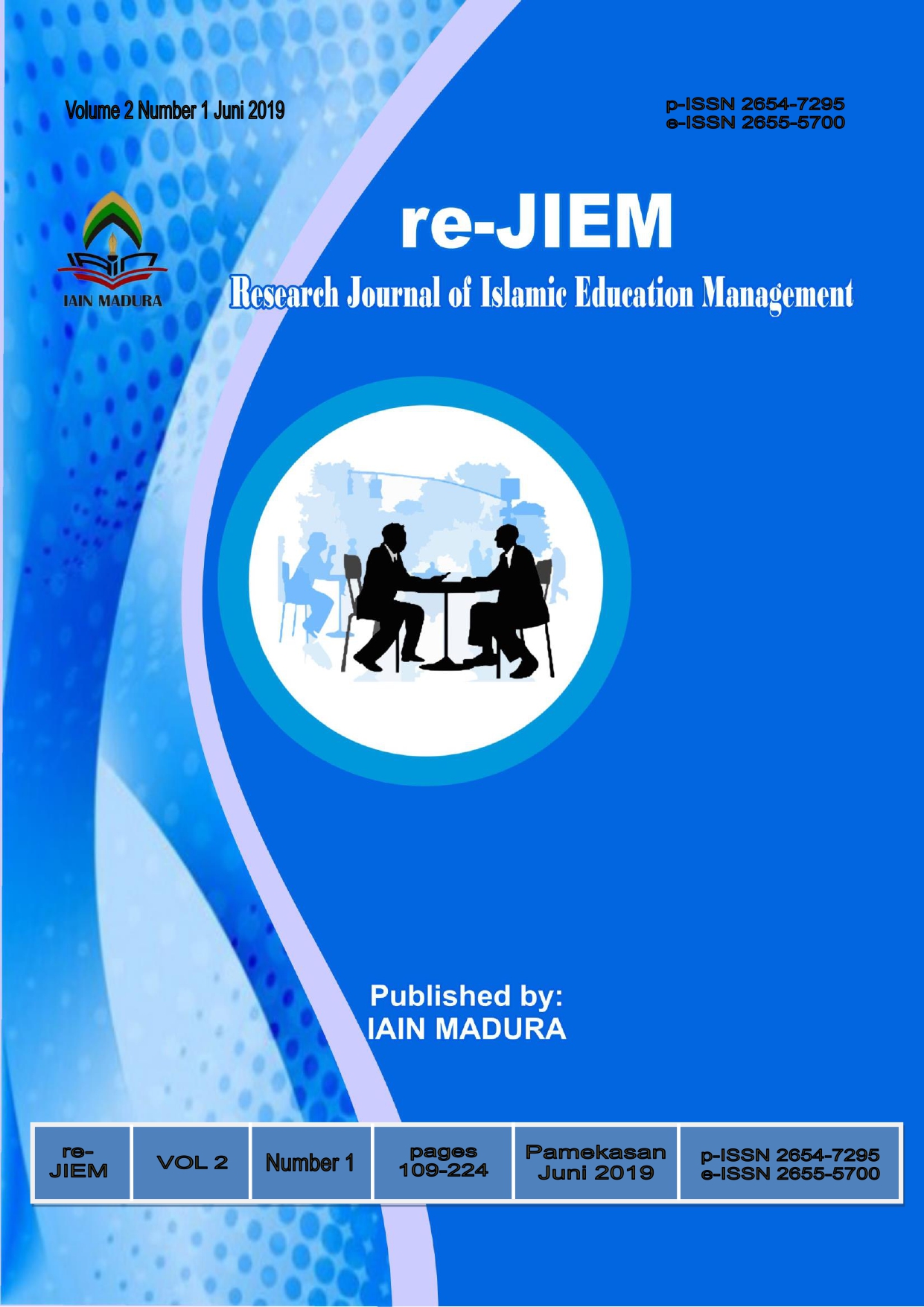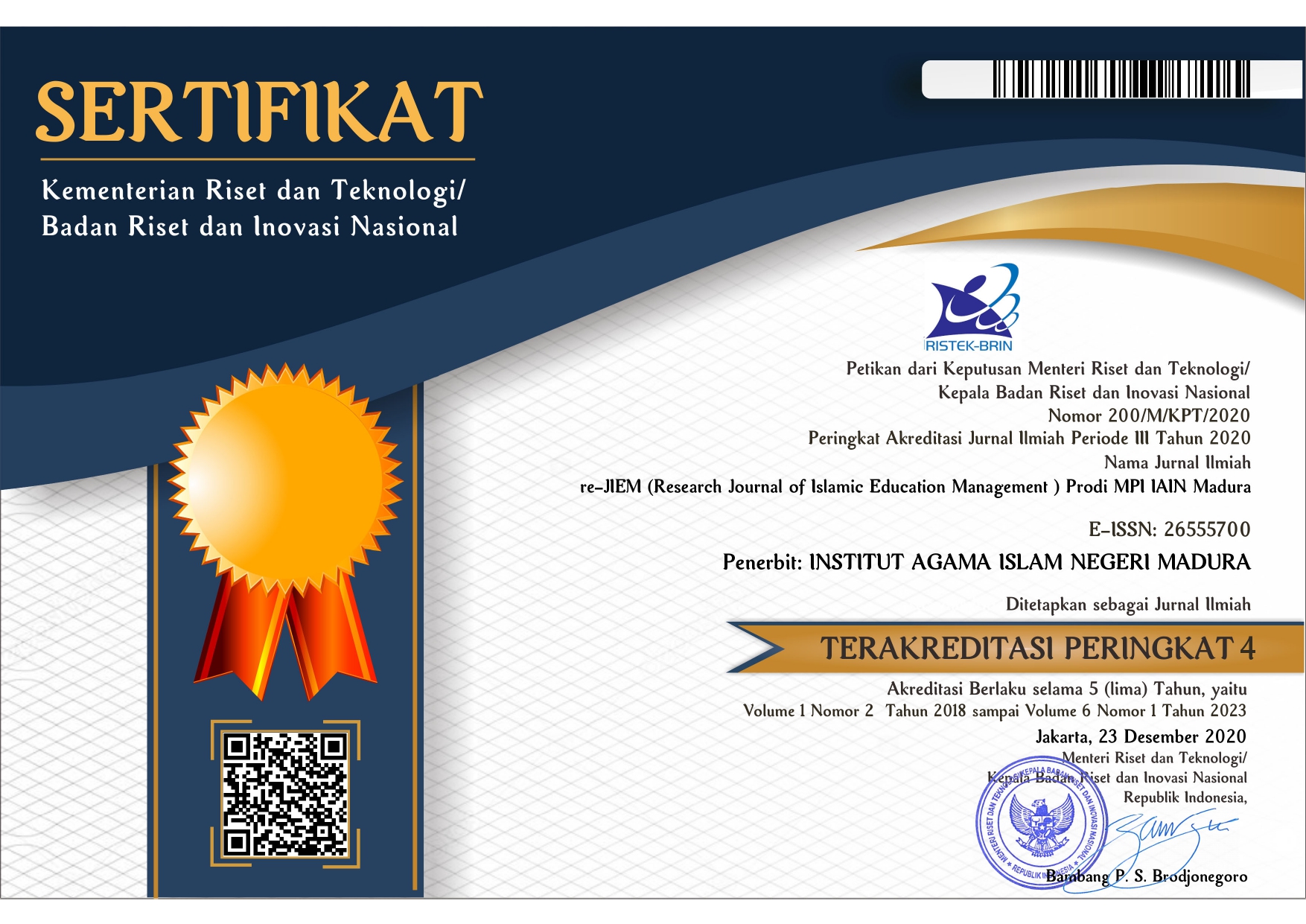PERANAN STRATEGIS HUMAS DALAM MEMPERTAHANKAN IMAGE DAN REPUTASI SD PLUS NURUL HIKMAH PAMEKASAN
 Abstract views: 792
,
Abstract views: 792
,
 PDF downloads: 648
PDF downloads: 648
Abstract
The existence of the community is one of the keys to the success and progress of the quality of educational institutions because when educational institutions are able to provide trust in the community they always support the activities of the institution. in accordance with the opinion of Mujammil Qamar in his book, that one of the keys to the progress of educational institutions is public trust, when they have trust in educational institutions, they will fully support, not only by sending their children to the education institution, but also recommending others to do so the same as him. Conversely, when the community does not believe, they do not not include their education institution's sons and daughters, but even influence their neighbors or employees, this means that the community is a strategic component that must be given full attention by education managers.
Downloads
References
Indriyo Gitosudarmo, Perilaku Keorganisasian,Yogyakarta: BPFE-Yogyakarta, 2000.
Lexy J. Moleong,Metodologi Peneltian Kualitatif Edisi Revisi.
Ngalim Purwanto, Administrasi dan Supervisi Pendidikan.
Rosady Ruslan, Manajemen Public Relation dan Media Komunikasi,Jakarta: Rajagrafindo Persada
Ruslan, Rosady, Manajemen Public Relation dan Media Komunikasi,Jakarta: Rajagrafindo Persada, 2010.
Soleh Soemerat & Elvinaro Ardianto, Dasar-dasar Public Relatios, Bandung: Remaja Rosdakarya, 2012
Sugiyono, Metode penelitian Kuantitatif Kualitatif dan R&D Bandung: Alfabeta, 2011
Sulistiyorini & Muhammad Fathurrahman, Esensi Manajemen Pendidikan Islam.
Zulkarnain Nasution, Manajemen Humas di Lembaga Pendidikan,Malang: UMM Press,2010
Authors who publish with this journal agree to the following terms:
Authors retain copyright and grant the journal the right of first publication with the work simultaneously licensed under a Creative Commons Attribution-ShareAlike 4.0 International License that allows others to copy and redistribute the material in any medium or format with an acknowledgment of the work's authorship and initial publication in this journal and also allows them to remix, transform, and build upon the material for any purpose, even commercially, with contributions under the same license as the original.
Authors are able to enter into separate, additional contractual arrangements for the non-exclusive distribution of the journal's published version of the work (e.g., post it to an institutional repository or publish it in a book), with an acknowledgment of its initial publication in this journal.
Authors are permitted and encouraged to post their work online (e.g., in institutional repositories or on their website) prior to and during the submission process, as it can lead to productive exchanges, as well as earlier and greater citation of published work.




















